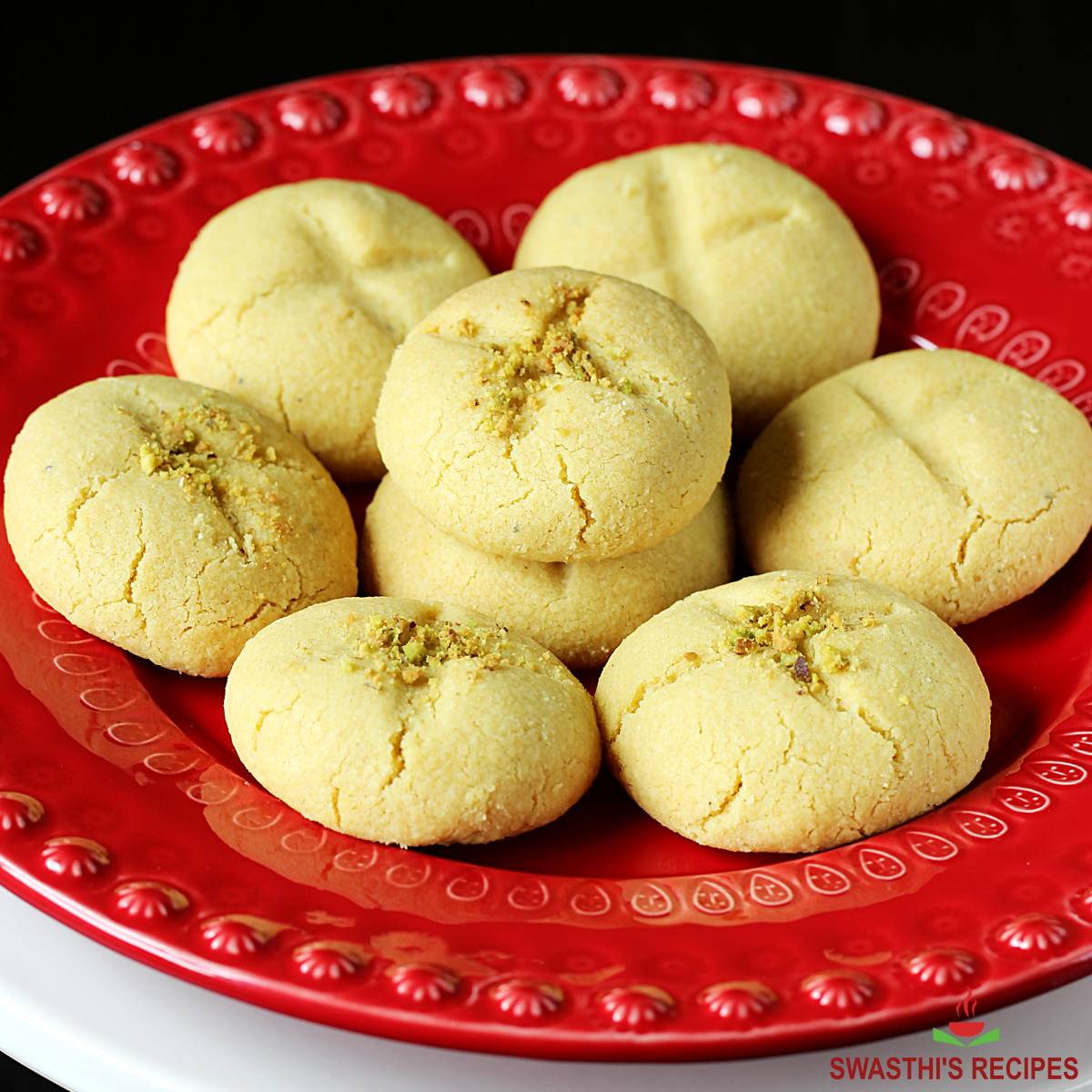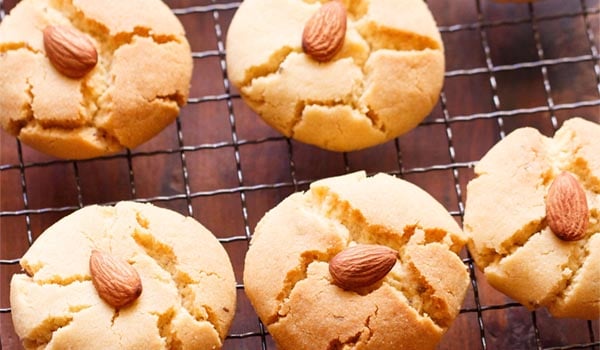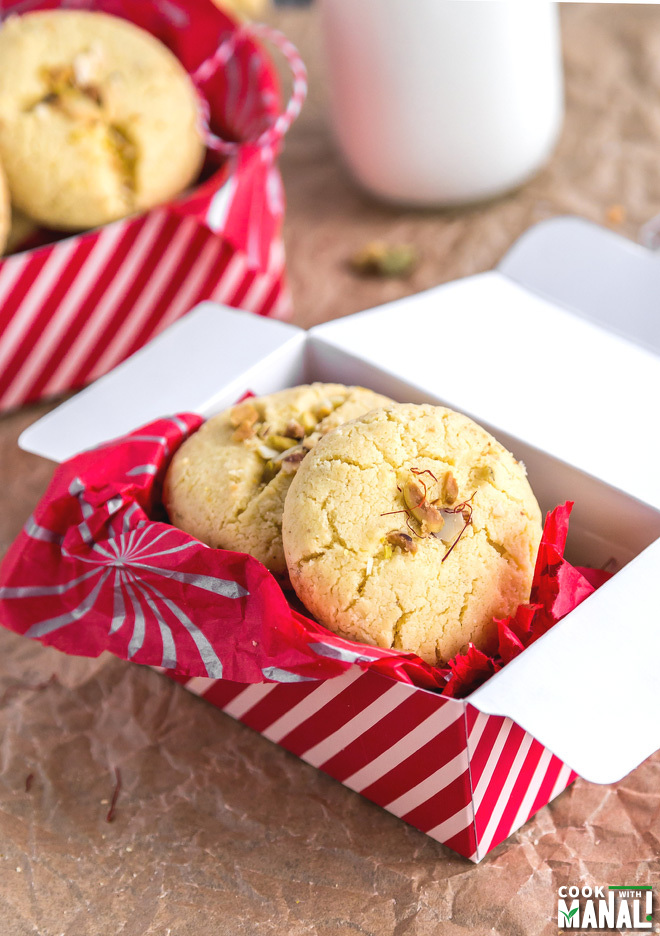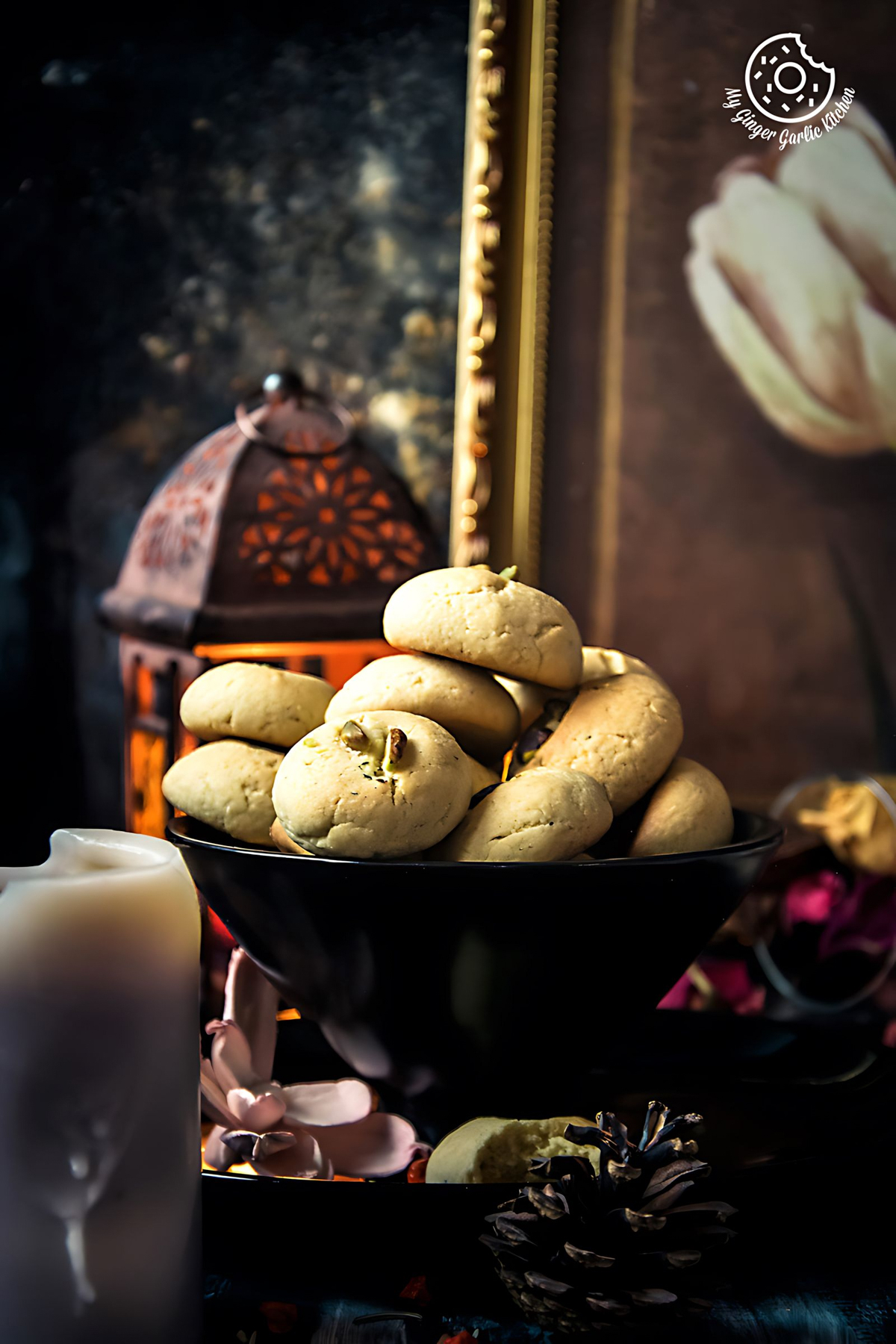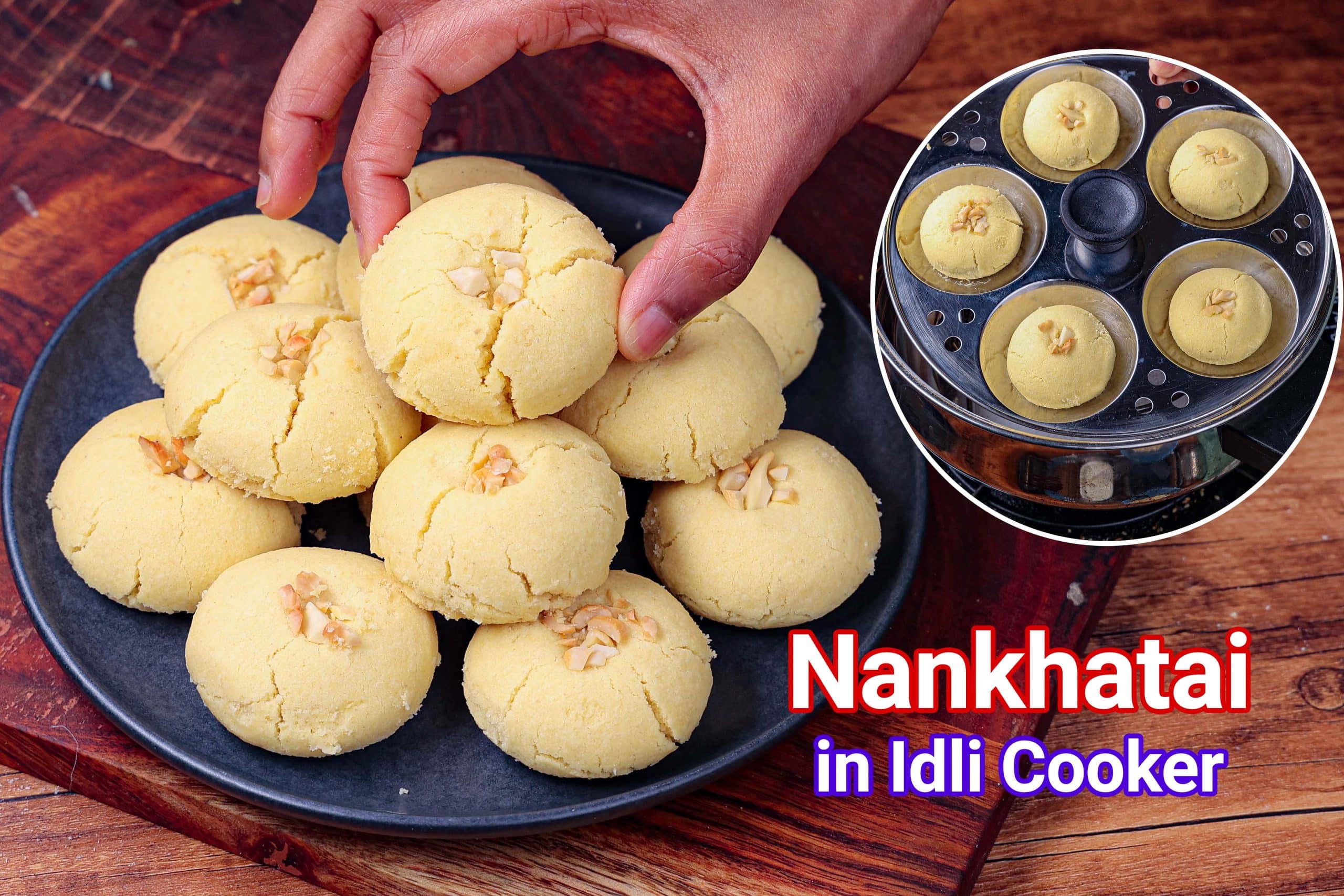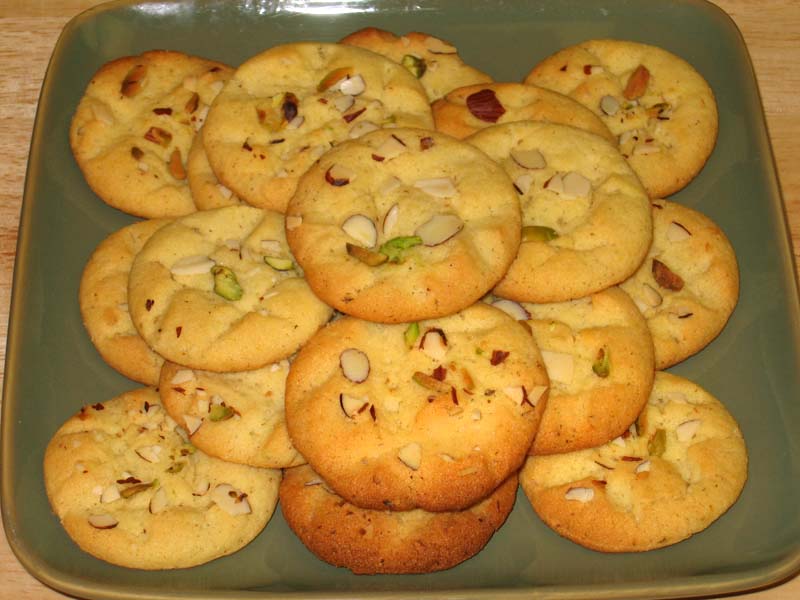Nankhatai
nan khatai, nan katai, nan ka htaing, နံကထိုင်, nankatai
Nankhatai / نان خطائی (Urdu); Sinhala: ඤාණකතා; Tamil: நானஹத்தா) are shortbread biscuits originating in the Indian state of Gujarat. They are now popular throughout India and also in the neighbouring countries of Pakistan, Bangladesh, Sri Lanka, Nepal and Myanmar. They have also recently gained popularity in Afghanistan and Iran. The word nankhatai is derived from the Classical Persian نانِ خطائی nān-i khaṭāʾī, lit. 'Cathayan bread, bread of Cathay [northern China]', composed of نان nān meaning ‘bread’ and خطائی khaṭāʾī meaning ‘Cathayan’. The word has been borrowed into the Burmese language as nankahtaing (နံကထိုင်), in the Tamil language (in East Tamil Nadu) as naanahatha (நானஹத்தா), and in the Sinhala language (in Sri Lanka) as ghanakatha (ඤාණකතා).
Source: Wikipedia
Recipes
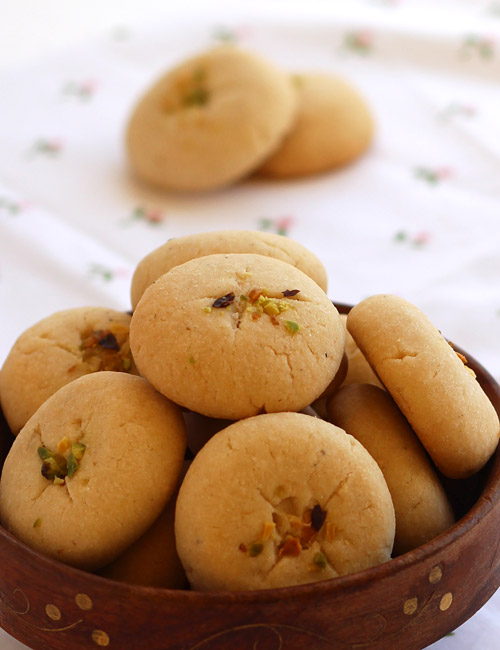
Nan Khatai Recipe - Eggless Buttery Indian Cookies - Step by Step Photo

